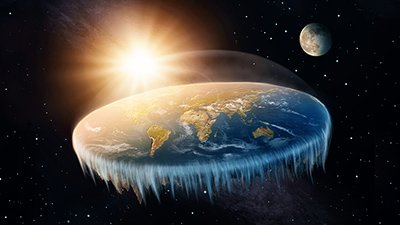Water: An Underappreciated Gift of the Creator
June 23 is considered National Hydration Day, a day that reminds us to replace the fluids our body loses throughout the day. Of course, the best fluid to sip all day is water—and lots of it. We are composed of about 60% water and cannot survive more than a week without drinking it.
Water might not immediately come to mind when we think of God’s good gifts to us. But water is so well designed for our use that a seemingly simple glass of the clear liquid should cause us to recognize the fingerprint of the Creator and give him glory.
Water: The Multi-Purpose Liquid
Water is not only essential to life on earth, but it is also incredibly useful. We drink it, cook with it, bathe in it, clean with it, play in it (or play on it in colder climates), find beauty in it, travel on it, and get energy from its movement. Water regulates earth’s temperature, provides a habitat for the seafood we eat, and is essential for growing all of our food. And those are only a few of water’s uses!
Water is perfectly designed for all of these functions.
- Water is colorless and tasteless, making it perfect for cooking. If it had a flavor or even a color, certain foods would be made much less appetizing by cooking them. Research has even shown our bodies may be able to “taste” tasteless water, alerting us if we’re drinking something that looks like water but is not actually water.
- Water in its pure state has a neutral pH (it is not an acid or a base), again making it perfect for cooking and drinking.
- Water is ideal for transporting dissolved substances, such as minerals, nutrients, and waste, throughout (or out of) our bodies.
- Water is one of few liquids that expand when frozen, allowing it to float on liquid water. If water sank when it froze, aquatic life in colder climates would be impossible.
- Water molecules stick to each other, creating surface tension. Surface tension allows insects to “walk on water,” makes rain fall in droplets, allows particles to float in water, and keeps water from immediately evaporating.
- Water absorbs colors in the red part of the spectrum (red, yellow, and orange), while the blue parts of the spectrum are scattered, giving the ocean and other bodies of water a blue color. As the light direction changes, translucence and reflection from the surface give a pleasing effect.
Where Did Water Come From?
This incredible molecule covers 70% of earth’s surface and is even found in and possibly even under the mantle. But where did it come from? In an evolutionary view, everything ultimately goes back to the big bang. Evolutionists believe this cosmological event would have created hydrogen and helium. Stars soon formed from the hydrogen and helium, and those stars created oxygen, as well as other elements. Eventually these stars exploded as supernovae, expelling oxygen and hydrogen into space where the two elements formed H2O (water).
Special Delivery
There are currently two major competing evolutionary stories on how water got to earth. Some believe the conditions on early earth would have evaporated any water as earth coalesced. Therefore, water would need to be delivered from an outside source, by comets or asteroids. However, this view has problems. Comets and asteroids would also have delivered material to earth. However, research suggests the asteroids that most likely would have delivered our water aren’t the right composition to match the material they would have left behind.
Also, using evolutionary assumptions about the age of the earth, it appears the earth’s oldest materials crystallized in the presence of liquid water over four billion years ago, too old to have been brought by comets or asteroids. To make matters worse for this idea, new evidence suggests water would have been vaporized as it arrived by extraterrestrial delivery.
A Degassing Planet
The other hypothesis suggests maybe water has always been present and volcanoes have delivered it to the surface by degassing, as water vapor is released from cooling magma near the surface. This puts water deep inside the earth from its beginning. This hypothesis runs into the earlier mentioned problem: would the proposed conditions on early earth have allowed such vast quantities of water to remain?
The True Origin of H2O
Neither of these proposed solutions adequately explains where water came from or how it could be so perfectly suited for life and for our use. But the Bible gives the answer. Water was one of God’s first creations. Genesis 1:1–2 says God created the heavens and earth and initially the earth was covered in water. As 2 Peter emphasizes, the earth was formed out of water and through water (2 Peter 3:5). On day two, this water was separated so some remains on earth and some is spread throughout the heavens, including in comets and asteroids.
Water doesn’t have a mysterious naturalistic origin. It was created by God from the very beginning—and it shows!
Recommended Resources

Answers in Genesis is an apologetics ministry, dedicated to helping Christians defend their faith and proclaim the good news of Jesus Christ.
- Customer Service 800.778.3390
- Available Monday–Friday | 9 AM–5 PM ET
- © 2025 Answers in Genesis






